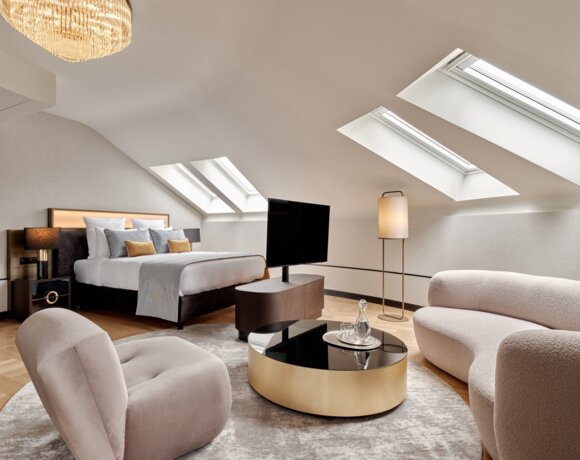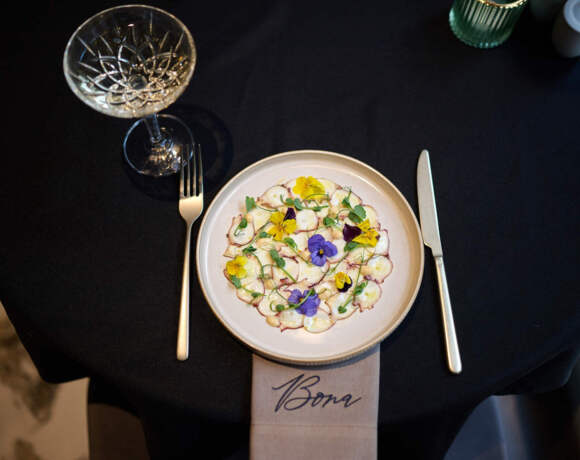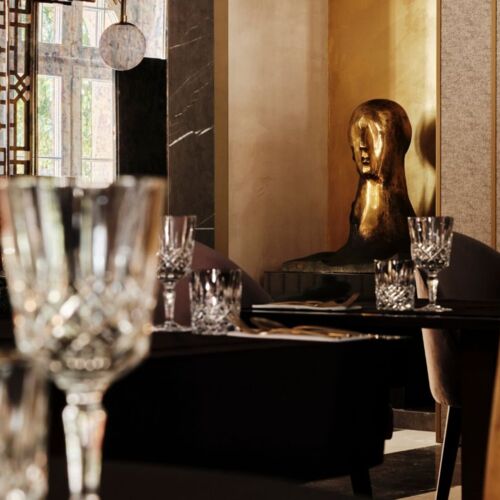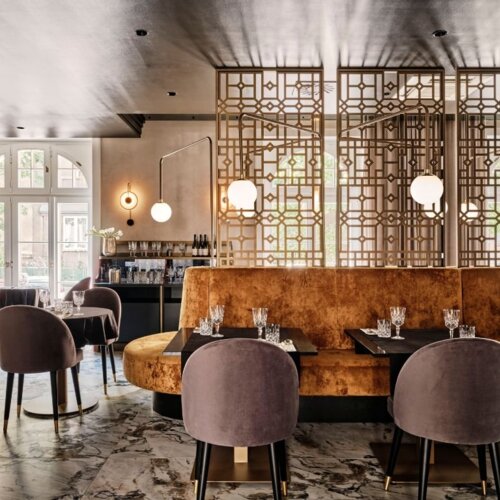Interiors with character
Where modernism meets art décoFrom the outside - a semicircular facade topped with bas-reliefs, a balcony with a majestic view of Krakow. Inside - marble countertops, structured stucco, gold. Right from the threshold, The Crown takes guests on a journey into the past. This is because the original design of the 1923 tenement house by Waclaw Krzyzanowski became not only the starting point, but also the leitmotif of the implemented project.

Elegant hotel in the heart of Kraków
Guests can enjoy comfortable rooms equipped with modern amenities such as air conditioning, a minibar, a flat-screen TV, and complimentary Wi-Fi. The hotel also offers a spacious conference room, ideal for business meetings or intimate events. Thanks to its central location, near the Main Market Square and Kazimierz, guests have easy access to the city’s most important tourist attractions.

Bona Restaurant – A culinary journey to Italy
Bona Restaurant is an elegant Italian restaurant located within The Crown Handwritten Collection hotel. Its interior delights with subtle Art Deco style, creating an atmosphere perfect for both romantic dinners and gatherings with friends or family. The chef serves fine-dining Italian dishes prepared with the highest quality ingredients, often sourced from local markets.









